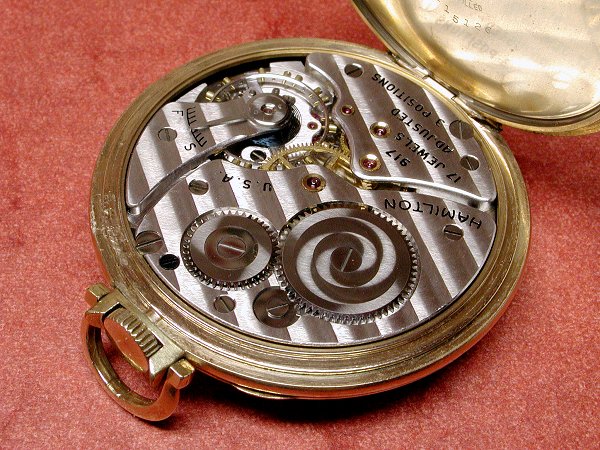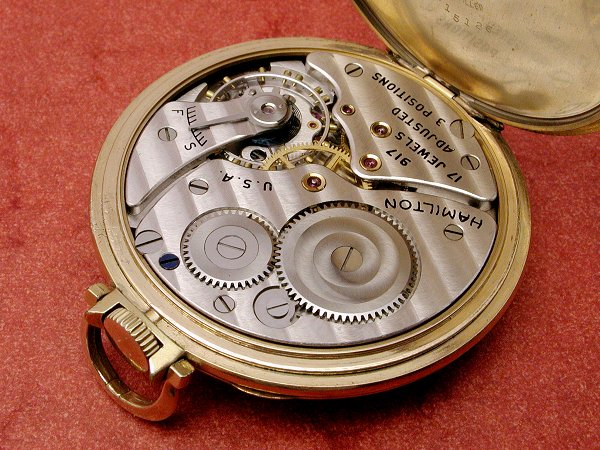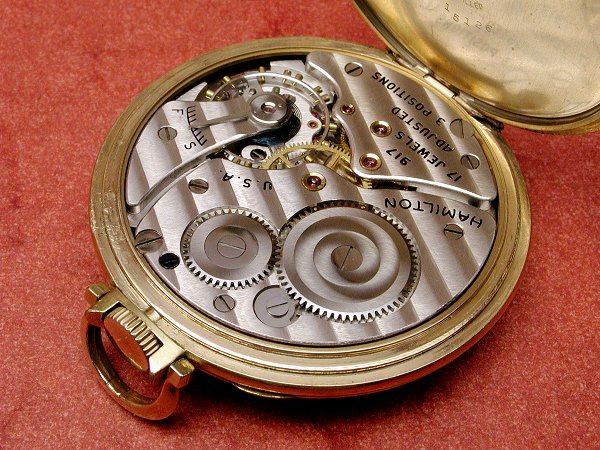

I rarely use undiffused light for watch pictures. Diffusing the light modifies the quality of the light reaching the subject by softening it. In order to illustrate the effect of diffusion I have taken 3 pictures of a damascened watch movement. I use a sheet of translucent draughtsman's tracing material positioned in between the light source and the watch. The small diagrams indicate the lighting setup used for each image.



This image was taken to illustrate the effect of a naked light source on the movement. The undiffused light has a harsh quality, and specular highlights are created by the reflective surface of the movement. Whilst the damascening is dramatically emphasized, there is too much contrast, and fine detail is lost.



For this image the diffusion material was introduced and placed very close to the watch. Due to the distance from the light source the material greatly diffuses the light and also introduces a smooth surface to be reflected, creating a very soft quality. In fact, it is too soft, and most of the 'sparkle' has been lost from the movement. The result shows fine detail very well, but the overall image is a little 'flat'.



Here the diffusion material has been moved farther away from the watch, toward the light source. This harshens the quality of the light to a degree, controlled by how far away the material is placed. The effect can be monitored in the camera viewfinder. A balance can be reached wherein the amount of diffusion allows fine detail to be rendered clearly, whilst still maintaining a degree of reflection from the movement. Thus we get the best of both worlds, and the movement is shown in its best light, literally!
Copyright 2005 Paul Delury